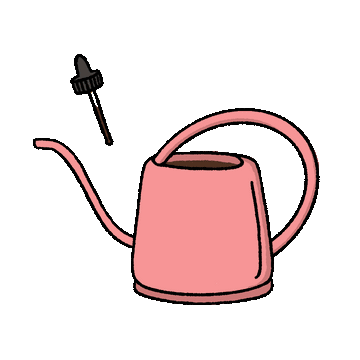If you're one of those people who can't keep a houseplant alive, don't worry – you're not alone. But people have been looking after indoor plants for over 5,000 years so its obviously something worth pursuing. With a little bit of knowledge and effort, anyone can be a plant parent. And what better place to start than by learning about the history of indoor plants!
Did you know that the first houseplants were brought to Europe from the Middle East over 1,000 years ago? Or that some of the most popular houseplants today are actually native to Africa? These plants have been through a lot in their lifetime – and they continue to thrive in our homes. So if you're looking for some inspiration (and confidence) to get started with your own plant collection, read on for our (very brief) history of houseplants.
The first houseplants were brought indoors by the Ancient Egyptians over 5,000 years ago.
Houseplants have been popular since ancient times, with an estimated 5,000 years ago being the earliest record of bringing plants indoors. It is believed that the Ancient Egyptians brought popular houseplants inside, such as ferns and palms trees, to decorate their homes and bring a little bit of nature inside. Over the years, our favourites have grown to include popular indoor plants like succulents, spider plants, pothos and more. Whether you prefer large indoor pots or colourful hanging baskets to showcase your favourite foliage, there are plenty of amazing options available today to make your home look and feel like an oasis.
Houseplants became popular in Europe during the Victorian era
As technology and scientific advances increased in the 19th century, Europe gradually turned its attention to houseplants. The popularity of terrariums became a major focus, with terrarium experts giving workshops to teach people how to successfully look after their terrariums. Fancy watering cans and sophisticated fertilisers also hit the market as more people wanted to have lush foliage at home. During this era, the Victorians took plant appreciation even further, with many investing in poetry and art that celebrated the beauty of nature. The Victorian era was truly a blossoming period for houseplants - terrariums were an incredibly popular symbol of wealth and status, while they could also act as a type of therapy by bringing joy or comfort to their owners.
Houseplants became widely available after World War II
With the end of World War II, houseplants became widely available in all parts of the world, allowing people to decorate their homes with best indoor plants and easy plants to grow inside. This availability not only spanned countries such as the United States and Europe, but also Australia where people found a range of species which they could maintain within their living environments. As a result, homeowners were able to bring nature into their homes without ever leaving them. In addition, houseplants were found to reduce household dust and ease stress while adding colour and interest to boring corners of the house. From then on, the popularity of houseplants only grew and continues to thrive today.
Today, there are over 10,000 species of houseplants available commercially
It's remarkable just how many plants we now have available for house use. With over 10,000 species found in nurseries, garden centres and online stores around the world, houseplant enthusiasts could spend a lifetime growing and discovering new varieties of houseplants. But it wasn't always this way. In fact, houseplant gardening has its origins centuries ago when individuals would collect and cultivate plants from the areas they travelled to, such as tropical rainforests. Today houseplant hobbyists can take advantage of a variety of techniques to keep their houseplants thriving, including applying neem oil to help combat insect pests (our neem is not a registered pesticide and we cannot market it as such), using potting mixes that match specific plant needs and providing regular liquid fertiliser as needed.
Houseplants provide many benefits, including improved air quality and mental health as well as showcasing an aesthetic and style to our homes
Since the time of Ancient Egypt, houseplants have been a part of home décor, bringing a sense of life indoors. From Strelitzia nicolai to Zz plants and Devil’s ivy, plants bring an array of aesthetic benefits while also improving air quality. Besides looking great in our homes, some even reap spiritual and mental health benefits; taking the time to propagate or care for our houseplants can be a great way to find a momentary escape from our day-to-day worries. Whether you’re new to the world of houseplants or an expert indoor gardener looking to expand your collection, now more than ever it’s easy to find high quality plant goods at terrific prices!
It's pretty amazing to think about how long ago humans first started keeping plants indoors. The practice has changed and evolved over time, but the benefits of having houseplants have remained constant. Today, there are more species of houseplants available than ever before - meaning there's definitely one (or a few) out there that are perfect for your home. And with all of the benefits they provide, why not give them a try? Who knows what the trends will be in another 5,000 years - what plants do you think will be popular then?



Leave a comment